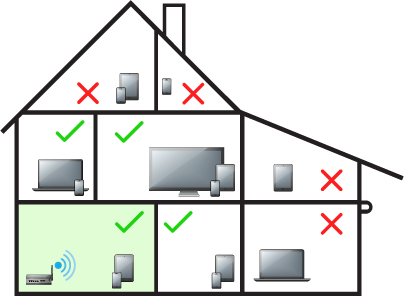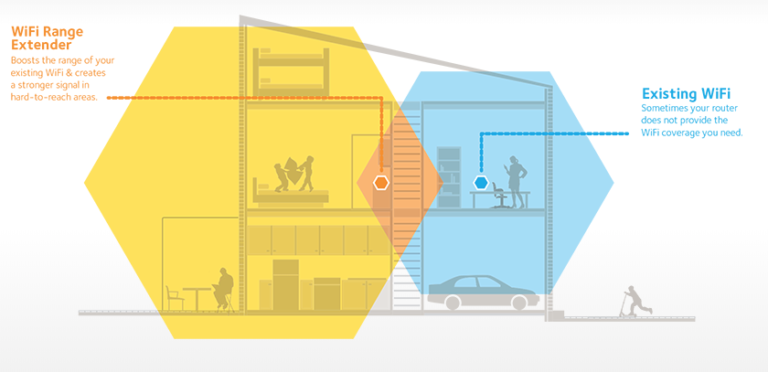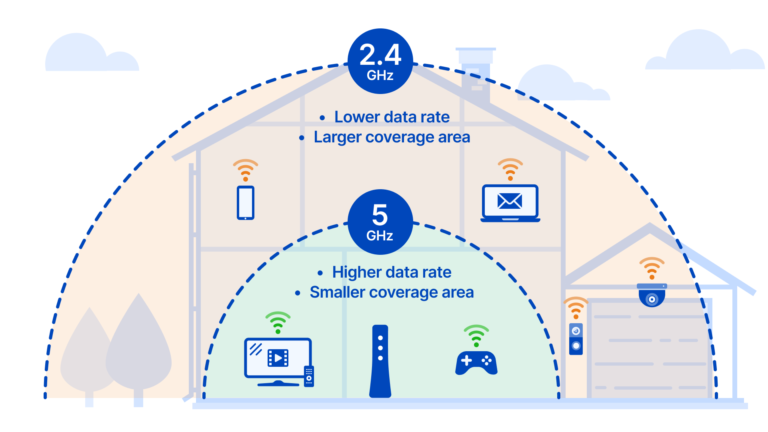How Do I Fix A Weak Wi-Fi Signal?
A weak Wi-Fi signal can be incredibly frustrating, especially if it’s preventing you from streaming your favorite shows or movies or making it difficult to stay connected with friends. Fortunately, there are several steps you can take to fix a weak Wi-Fi signal. From changing the position of your router to upgrading your router, these steps can help boost your signal and ensure you can make the most out of your internet connection.
Identifying the Problem
Having a weak Wi-Fi signal can be incredibly frustrating, especially when streaming movies, playing online games, or using video conferencing. But before you can fix the problem, you need to identify what is causing the weak signal. There are a few common reasons for a weak Wi-Fi signal, including interference from other wireless devices, distance from the router, and poor signal quality from the router itself.
Interference from other wireless devices is one of the most common causes of a weak Wi-Fi signal. Other wireless devices such as cordless phones, baby monitors, and microwaves can interfere with the Wi-Fi signal and cause it to be weak. To fix this, move the other devices away from the router or turn them off while using the Wi-Fi.
If your router is far away from the device you’re using, the signal could be weak. To fix this, you’ll need to move the router closer to the device or move the device closer to the router. You can also use a Wi-Fi extender or repeater to extend the signal range of the router.
Finally, the router itself could be the cause of the weak signal. This could be due to a poor antenna design, outdated firmware, or a simple hardware issue. To fix this, you’ll need to check the router’s settings and update the firmware, or replace the router if necessary.
By identifying the cause of the weak Wi-Fi signal, you can take the necessary steps to fix the problem and get back to enjoying your favorite online activities.
Troubleshooting Wi-Fi Signal Strength
As the demand for reliable wireless internet continues to grow, many people struggle to maintain a strong Wi-Fi signal. Wi-Fi signal strength can decrease due to many factors, such as physical obstacles, interference from other devices, or outdated equipment. Fortunately, there are ways to fix a weak Wi-Fi signal.
The first step in troubleshooting a weak Wi-Fi signal is to determine the source of the issue. If the signal is weak in certain parts of the home, it could be caused by physical obstacles that are blocking the signal. This could include walls, furniture, appliances, or other objects. Move any obstructions away from the router or access point to help the signal reach the furthest parts of the home.
If the physical environment does not appear to be the source of the issue, it may be caused by interference from other devices. Bluetooth speakers, microwaves, and cordless phones can all interfere with Wi-Fi signals. Try moving these devices away from the router or access point to reduce interference. Additionally, ensure that the router or access point is up to date. Older devices may not be able to handle the demands of modern technology, so make sure that it is running the latest version of firmware.
By following these steps, people can successfully troubleshoot weak Wi-Fi signals and maintain a strong connection in their homes. With the right equipment and a few strategic changes, people can enjoy all the benefits of a reliable wireless internet connection.
Identifying Interference
A weak Wi-Fi signal can be a real headache. It can lead to slower speeds, intermittent connection, or complete disconnection. Fortunately, there are steps you can take to identify and fix the issue. One of the most common causes of a weak Wi-Fi signal is interference from other wireless devices or appliances. To identify this interference, you should run an interference test. This can be done by using a Wi-Fi analyzer app, which will give you a detailed report of all the wireless networks in your area. The app will also show you the strength of the signal from each network, allowing you to pinpoint any networks that are causing interference. Once you’ve identified the source of the interference, you can take steps to reduce its impact on your Wi-Fi signal. This could include moving the interfering device away from your router, reducing the frequency of the signal, or setting up a dedicated wireless network for the device. By following these steps, you can ensure that your Wi-Fi signal is running at peak performance.

Upgrading Your Router
Having a weak Wi-Fi signal is a common issue for many people. Fortunately, there are a few simple solutions to improving the signal strength. One of the most effective solutions is upgrading your router.
Newer routers are designed to provide a stronger signal and faster connection speeds. If you’ve had your router for a few years, it might be time to upgrade. New routers can be found at any electronics store, and the cost can range from a few hundred dollars to a few thousand.
When buying a new router, look for one that is compatible with your current system. You’ll also want to make sure that it is compatible with the latest Wi-Fi standards, such as 802.11ac. Additionally, look for routers with dual-band capabilities, as these are better for streaming video and audio.
Once you’ve chosen the right router for your needs, you will need to install it. This can be done by following the instructions provided in the router’s manual. After installation, you may need to adjust the settings to get the best performance out of your new router.
Upgrading your router can be a great way to improve the signal strength of your Wi-Fi network. With a new router, you’ll be able to enjoy faster speeds and better coverage throughout your home.
Using a Wi-Fi Extender or Booster
If you’re having trouble with a weak Wi-Fi signal in certain parts of your home or office, a Wi-Fi extender or booster could be the perfect solution. These devices can amplify the signal from your router, helping you extend your existing network to areas that are previously unreachable. But how do you go about choosing the right one?
One of the most important factors to consider when selecting a Wi-Fi extender or booster is the range. This will determine how far the signal can reach, and if it’s able to cover the entire area that you require. You’ll also need to check that the device is compatible with your router and if it has the features that you need.
Another thing to consider is whether you’ll need to install the device yourself or if it can be done professionally. Professional installation may cost more, but it will ensure that the device is set up correctly.
Finally, you should also look at how easy the device is to use. Some of the more advanced models may require some technical knowledge to set up, so it’s important to make sure you understand how it works before you purchase it.
By taking the time to find the right Wi-Fi extender or booster, you can ensure that you get the best possible signal strength in even the most difficult to reach areas.
Optimizing Your Network Settings
Having a weak Wi-Fi signal can be one of the most frustrating experiences. Luckily, there are some simple steps you can take to improve your signal strength and optimize your network settings.
The first step is to confirm you have the correct settings for your router. Check if the router is on the latest firmware version, and if not, update it. Make sure the router is in an optimal position, preferably in the center of the home with no obstructions. Then, access the router’s settings and look for options such as channel selection, signal strength, and data rate. Tweaking these settings can help improve your signal strength.
If your router is an older model, you may want to consider investing in a new one. Newer routers have more powerful antennas and can transmit over greater distances. Look for a router with dual-band capabilities, as this can help reduce congestion from other devices.
Finally, it’s important to keep your network secure. Make sure the router’s default password has been changed, and consider enabling additional security features such as WPA2 encryption or MAC filtering.
By following these steps and optimizing your network settings, you should be able to improve your Wi-Fi signal and enjoy a better connection.
FAQs About the How Do I Fix A Weak Wi-Fi Signal?
1. What can I do to improve my Wi-Fi signal?
Answer: You can try moving your router to a more central location, away from obstructions such as metal furniture, walls or large appliances. You can also purchase a range extender or wireless repeater to boost your signal strength.
2. How do I know if my router is the cause of my weak Wi-Fi signal?
Answer: If your router is more than 3 years old, it may not support the latest Wi-Fi standards. You can also check to see if the router is configured correctly and that the antennas are in the correct position.
3. What if my Wi-Fi signal still won’t improve?
Answer: If your router is up to date and configured correctly and you still have poor signal strength, it may be due to interference from other wireless networks or physical obstructions. In this case, you may need to contact your Internet Service Provider for further assistance.
Conclusion
In conclusion, fixing a weak Wi-Fi signal can be a tricky endeavor. There are multiple possible causes, from outdated hardware to interference from other devices. By troubleshooting the issue and following the steps outlined above, you can pinpoint the problem and determine the best solution to improve your Wi-Fi signal strength.





